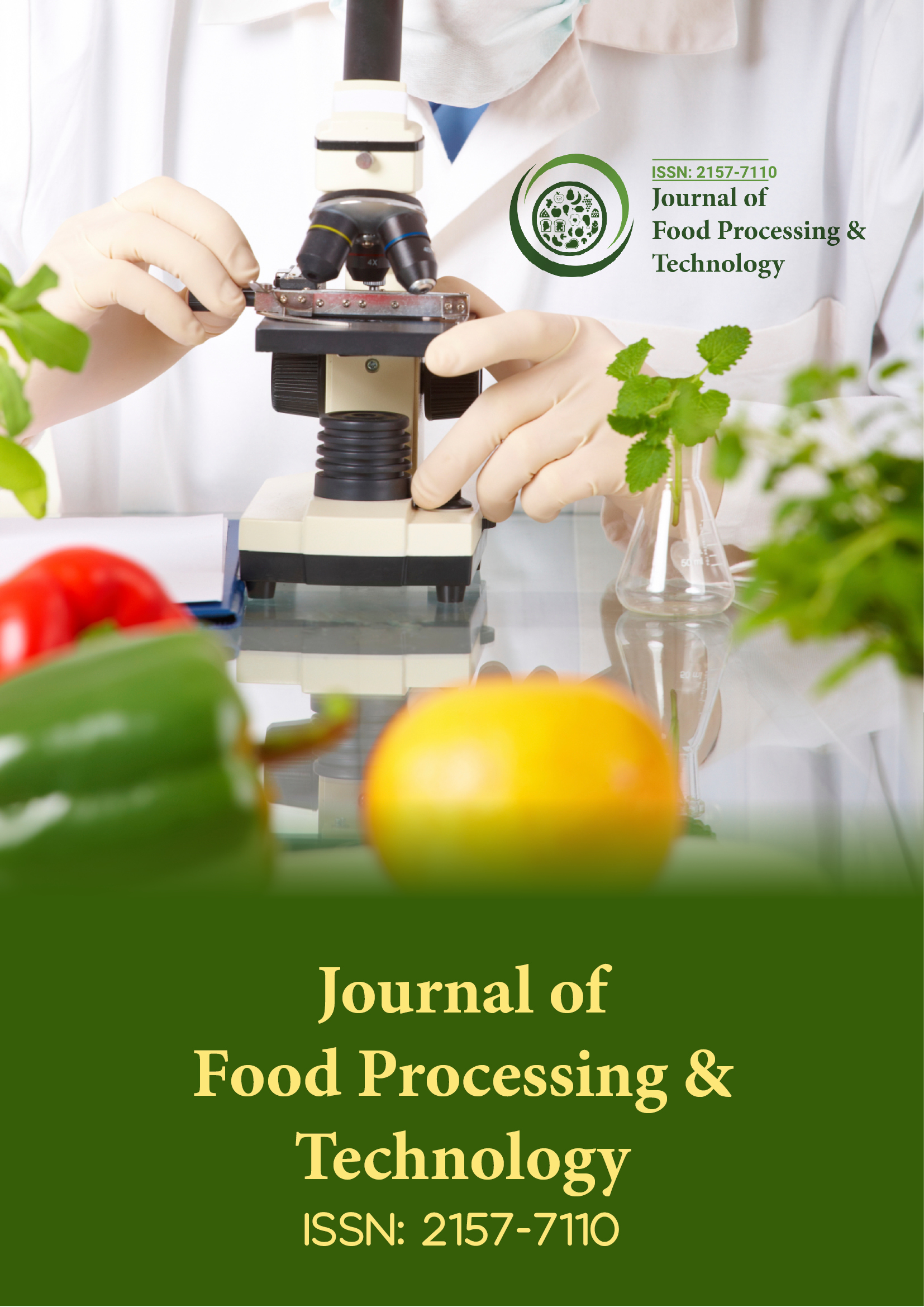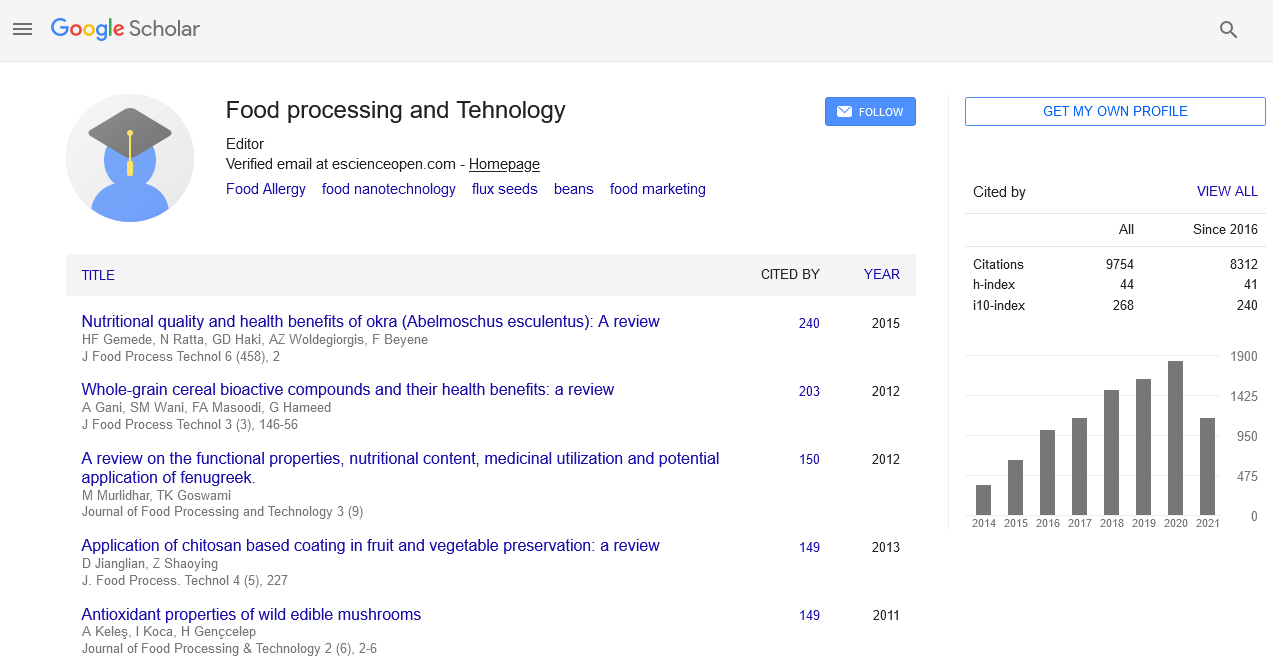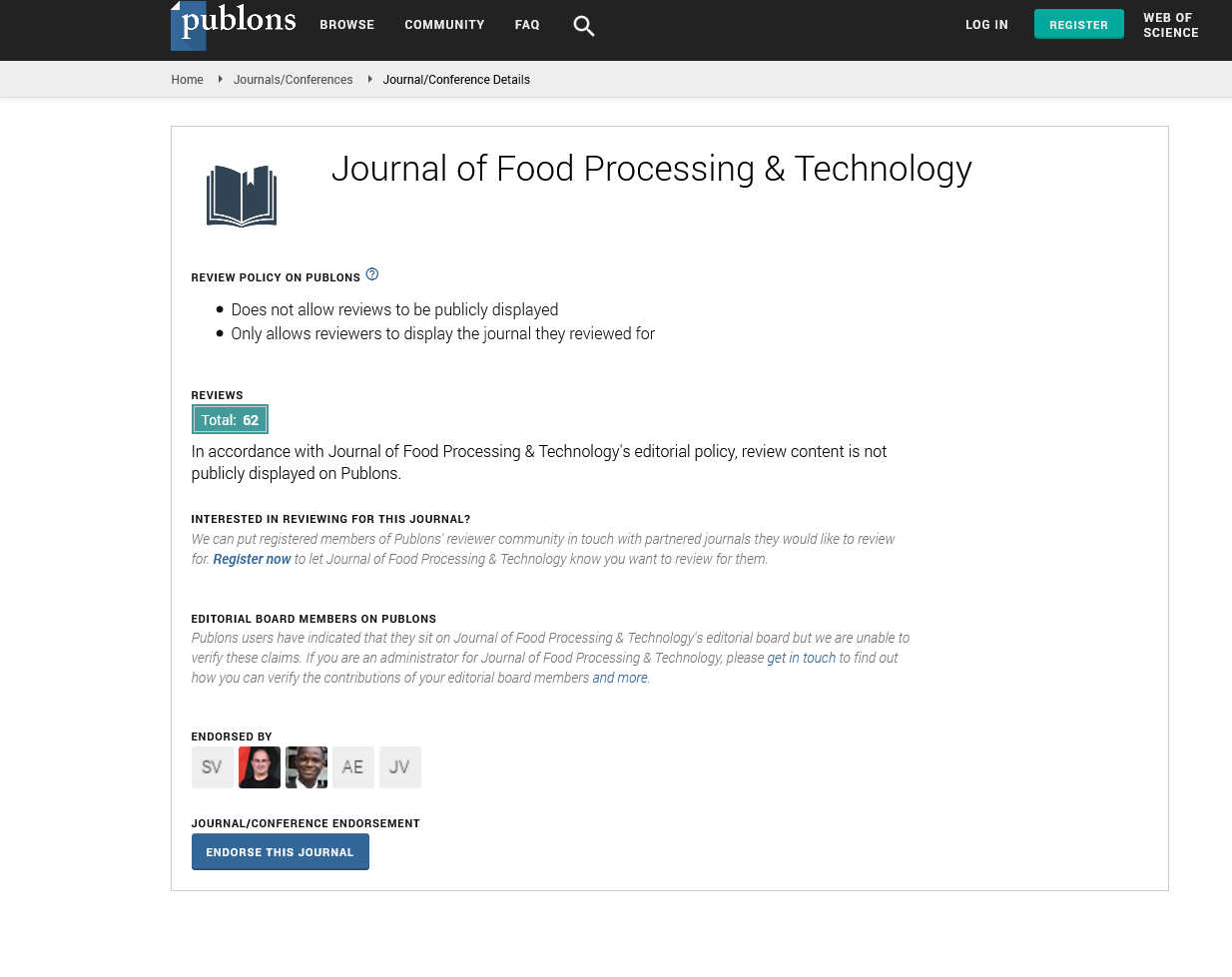Indexed In
- Genamics JournalSeek
- Academic Keys
- JournalTOCs
- China National Knowledge Infrastructure (CNKI)
- Access to Global Online Research in Agriculture (AGORA)
- Centre for Agriculture and Biosciences International (CABI)
- RefSeek
- Directory of Research Journal Indexing (DRJI)
- Hamdard University
- EBSCO A-Z
- OCLC- WorldCat
- Scholarsteer
- SWB online catalog
- Publons
- Euro Pub
- Google Scholar
Useful Links
Share This Page
Journal Flyer

Open Access Journals
- Agri and Aquaculture
- Biochemistry
- Bioinformatics & Systems Biology
- Business & Management
- Chemistry
- Clinical Sciences
- Engineering
- Food & Nutrition
- General Science
- Genetics & Molecular Biology
- Immunology & Microbiology
- Medical Sciences
- Neuroscience & Psychology
- Nursing & Health Care
- Pharmaceutical Sciences
Commentry - (2025) Volume 16, Issue 2
Non-Thermal Preservation Approaches in Dairy-Based Beverages
Hiroshi Tanaka*Received: 28-Mar-2025, Manuscript No. JFPT-25-29639; Editor assigned: 31-Mar-2025, Pre QC No. JFPT-25-29639; Reviewed: 14-Apr-2025, QC No. JFPT-25-29639; Revised: 22-Apr-2025, Manuscript No. JFPT-25-29639; Published: 28-Apr-2025, DOI: 10.35248/2157-7110.25.16.1152
Description
The demand for dairy-based beverages with longer shelf stability and high nutritional integrity has driven research into alternatives beyond conventional thermal treatments. While pasteurization and sterilization ensure microbial safety, they often diminish flavor and lead to protein denaturation. To address these limitations, non-thermal technologies such as high-pressure processing, pulsed electric fields, and cold plasma are being widely investigated and applied. High-pressure processing has emerged as a highly efficient method where products are subjected to pressures up to 600 MPa. This treatment inactivates harmful microorganisms without raising the temperature to levels that cause nutrient degradation. Dairy beverages retain their sensory quality, including creaminess and natural flavor, while maintaining functional proteins and bioactive peptides. Additionally, high-pressure processing has shown effectiveness in extending shelf life up to several weeks under refrigeration, making it attractive for global supply chains.
Another method gaining traction is pulsed electric field treatment, which involves short bursts of high-voltage electricity to inactivate microorganisms. This approach is particularly suited for liquid dairy products like milk-based smoothies and protein drinks. The main benefit lies in reduced heating, which minimizes chemical changes and maintains the stability of sensitive vitamins. Furthermore, the technology requires relatively low energy compared to extended heating, aligning with sustainability targets in the food industry. Cold plasma treatment has recently been examined for its application in dairy beverages. This method utilizes ionized gases that can disrupt microbial cell walls without significantly altering nutritional or sensory attributes. Studies in Europe have demonstrated that cold plasma can effectively reduce bacterial counts while preserving bioactive compounds such as immunoglobulins in milk.
Consumer expectations are also driving this research. There is increasing demand for “natural” products free from additives and excessive processing. Non-thermal techniques satisfy these demands by allowing beverages to maintain near-fresh qualities. For example, yogurts processed with high pressure retain more of their natural taste compared to heat-treated varieties. This not only appeals to health-conscious consumers but also supports the premium market segment. Economic considerations are important in scaling these technologies. While initial equipment costs are high, the long-term benefits include reduced energy consumption, extended shelf stability, and the ability to cater to global export markets. Multinational dairy companies have already started adopting high-pressure systems in large plants across Europe, the USA, and Australia.
However, the introduction of these technologies faces challenges related to regulatory frameworks. Food safety authorities in different countries have varying standards, and approval processes for novel processing methods can be time-consuming. Harmonization of regulations would enable broader adoption and faster market acceptance. Future developments are expected to focus on hybrid systems where non-thermal and thermal methods are combined to maximize safety while preserving quality. Research is also exploring the integration of these methods with smart sensors to monitor microbial inactivation in real time. The global dairy industry is evolving quickly, and non-thermal methods offer a pathway to produce safer, more nutritious, and better-tasting beverages. With ongoing technological advancements, these approaches will continue to expand, ultimately transforming how dairy drinks are preserved and consumed worldwide.
Citation: Tanaka H (2025). Non-Thermal Preservation Approaches in Dairy-Based Beverages. J Food Process Technol.16: 1152.
Copyright: © 2025 Tanaka H. This is an open access article distributed under the terms of the Creative Commons Attribution License, which permits unrestricted use, distribution and reproduction in any medium, provided the original author and source are credited.


